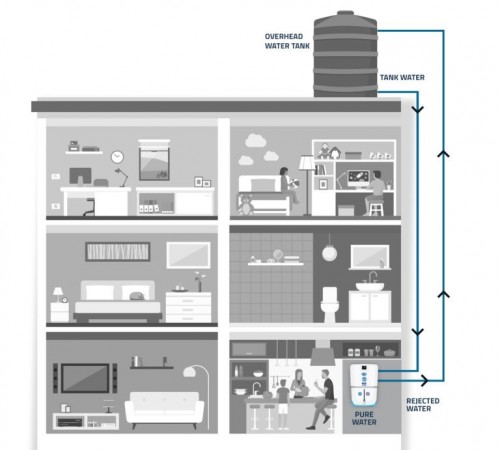
When it comes to water purification, everyone swears by the name of Reverse Osmosis (RO) water purifying technology. It is true because RO purification is the most effective method to eliminate TDS from water.
The significant advantage of RO water purification is that it eliminates up to 99% of TDS, thereby making the water pure and hygienic to drink. However, this process has a significant drawback. It wastes a lot of water. Studies have shown that every glass of water purified using the RO process, there is a wastage of nearly two and a half glasses of impure water. Yes, it depends on the extent of TDS in the water source, but the wastage is for real. In India, it is a criminal wastage because there is tremendous water scarcity throughout the country. Kent has come up with a novel solution, Zero Water Waste Technology, in its latest water purifier models. We shall see how it works. Before that, we shall discuss the RO water purification process in brief.
The RO Water Purification Process
Students of botany can recall that they have studied the principles of osmosis in the botany lectures. Osmosis involves movement of liquid from a medium of lower concentration to that of a higher concentration through a semipermeable membrane. Roots absorb water from the soil using osmosis.In the Reverse Osmosis process, the water moves from a higher concentrated medium to a lower concentration, again through a semipermeable membrane. Since it is against the natural forces, RO requires the use of a pump. As the water with high TDS levels moves through the RO membrane, it emerges as pure water without any TDS. At the same time, the water containing the residual TDS is siphoned off as "Reject Water." This water includes extremely high TDS levels and is not fit for consumption. However, you can use it for miscellaneous purposes like cleaning toilets, watering plants, washing utensils, and many more.
The Zero Water Wastage Process? Patented by Kent
These water purifiers work on the same RO water purification process where there is a separation of TDS-free pure water and Reject Water. The difference is that the water purifier does not flush the Reject Water down the drain. It uses the pump available with the RO water purifier device to send the water to the main overhead tank in the building for recirculation. Thus, there is no Reject Water flowing down the drain. The water that goes into the overhead tank mixes with the regular water supply and gets diluted. Therefore, there is a recirculation of water, thereby resulting in saving water.
These best water purifiers in India require additional installation of plumbing work to direct the water disposed of by the device to the overhead tank. It is useful for different purposes like watering the plants, cleaning floors and toilets, and even for cleaning utensils. As it gets diluted, the TDS levels become low. The same water can flow into the RO water purifier again for purification purposes. The central idea behind this technology is that it does not waste any water by sending it down the drain. Hence, the name, Zero Water Wastage RO Water Purifier.
Also Read:
PM Modi launches Swamitva Yojna, 1 lakh villagers get property cards
Biocon funds INR 65 crore to Namma Metro Bangalore as a part of CSR
Recruitment for many posts in UPSC, Apply here by direct link